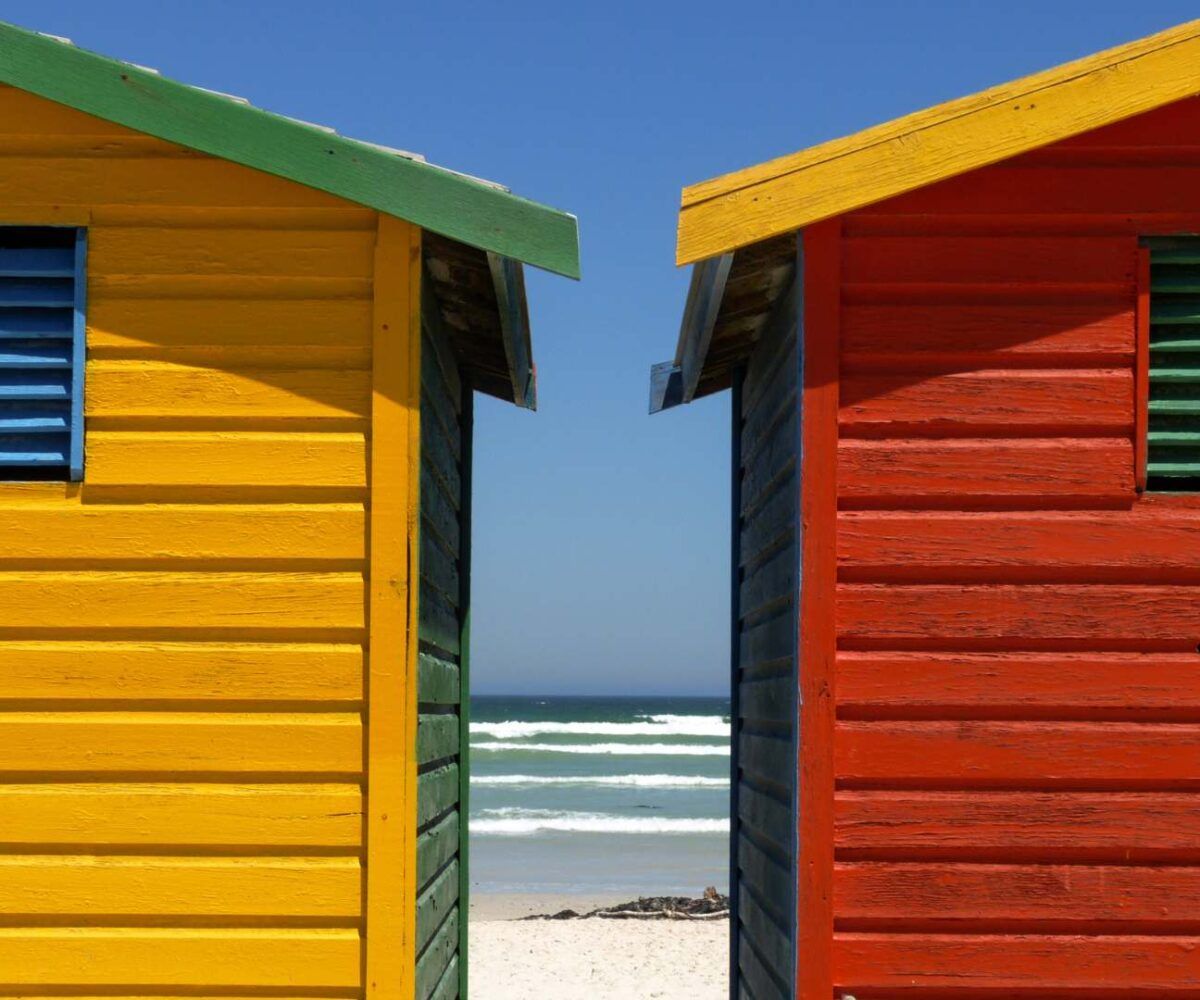The vibrant and renowned beach huts of Muizenberg, with their vivid hues and charming architecture, have become symbolic of Cape Town’s coastal allure. But beyond their picturesque appearance, these structures have a rich history that mirrors the evolution of seaside culture over the past century. Take a look…
Origins in the early 1900s
The concept of beach huts traces back to the “bathing machines” of the 19th century – mobile structures designed to preserve the modesty of bathers as they entered the sea. As societal norms relaxed, stationary bathing boxes became quite prevalent around the world.
In the early 1900s, Muizenberg, emerging as a popular seaside resort, introduced its own set of these huts. They provided beachgoers with private spaces to change into swimwear, aligning with the modesty standards of the era.
Evolution through the decades
Throughout the 20th century, the huts underwent several transformations. Originally utilitarian, they were gradually adorned with the bright, distinctive colours we see today, enhancing the beach’s visual appeal. These huts not only served practical purposes but also became social hubs, witnessing countless family gatherings, sunbathers, and surfers drawn to Muizenberg’s famed waves.
Challenges and restoration efforts
By the early 21st century, the beach huts faced significant deterioration due to exposure to harsh coastal elements and periods of neglect. In 2017, discussions about their potential removal sparked public outcry, highlighting their cultural and historical significance.
Responding to community sentiment, restoration projects were initiated. A notable effort commenced in early 2022, with the City of Cape Town allocating R3 million for renovations at Surfers Corner. This phase focused on structural reinforcements as well as aesthetic enhancements.
Subsequent phases extended the refurbishment to additional beach huts, with a total investment of R5.9 million dedicated to preserving these iconic structures.
Cultural significance today
Today, the Muizenberg beach huts stand as colourful testaments to the area’s rich heritage. They continue to attract tourists, photographers, as well as locals, symbolizing the enduring charm of Cape Town’s seaside traditions.
Beyond their aesthetic appeal, these huts serve as a reminder of Muizenberg’s golden era as a premier holiday destination and the evolution of beach culture over time. They also play a role in community engagement, inspiring local art, surf culture, and tourism initiatives that contribute to the economy.
Have you visited the huts?
Let us know by leaving a comment below, or send a WhatsApp to 060 011 021 1.
Subscribe to The South African website’s newsletters and follow us on WhatsApp, Facebook, X and Bluesky for the latest news.











